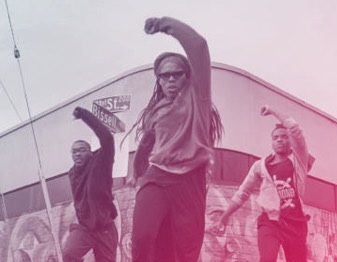At the new Luna Dance Institute offices in Emeryville, a Bay Area organization has finally found a space to match its mission. Standing in a loose cluster of cubicles, I can see through a clear glass partition into a small dance studio. Behind me, Luna’s staff are developing curriculum and writing grant proposals. In front of me, a group of children are taking a dance class, wriggling and leaping across the space to the beat of a small drum.
This physical proximity between Luna’s staff and the classes they offer is one manifestation of their unerring focus on the experience of each individual child they serve. From the time I first encountered Luna, as one of their first students in the early ’90s, they have remained devoted to an engaged model of arts education, in which dance teachers step directly out of the studio into their offices and all curriculum and organizational policy is informed by direct experience in the classroom.

Editing a press release next door to a room full of laughing, shrieking children is never easy, and the dance class in Luna’s studio is by no means unobtrusive. There are no little girls in pink tutus lined up along a mirror, quietly executing identical steps. Instead, children are scattered across the floor, deeply immersed in their own personal dances. One kid stands in the center of the room, turning and twisting in on himself, while another bounds through an obstacle course of her classmates. Their teacher calls out for them to explore a new shape or to make themselves as big or small as they can and keeps them focused with the regular beat of her drum.
In the Luna curriculum, this corresponds to the first phase of a class, called exploration, in which students are encouraged to take a concept like ‘symmetry’ or ‘relationship’ and find as many ways as possible to express it in movement. In the next phase, improvisation, the teacher offers certain limits to help the students define the movements or concepts they want to explore in more depth — instructing them, for example, to find a beginning, middle, and end within their sequence of movements. Finally, having each created a short original composition, the students perform for their classmates, who offer responses and feedback to the dancer.





